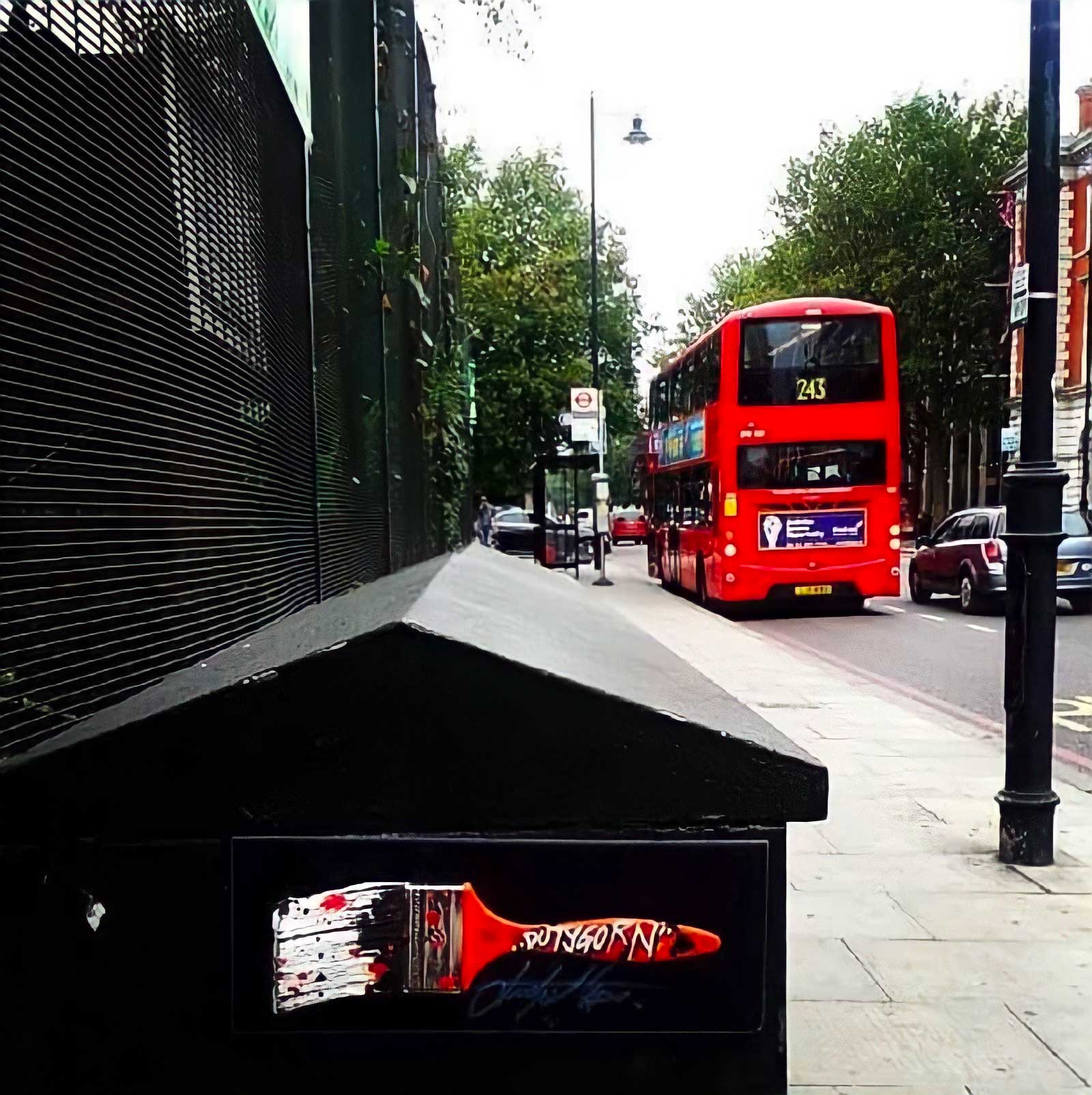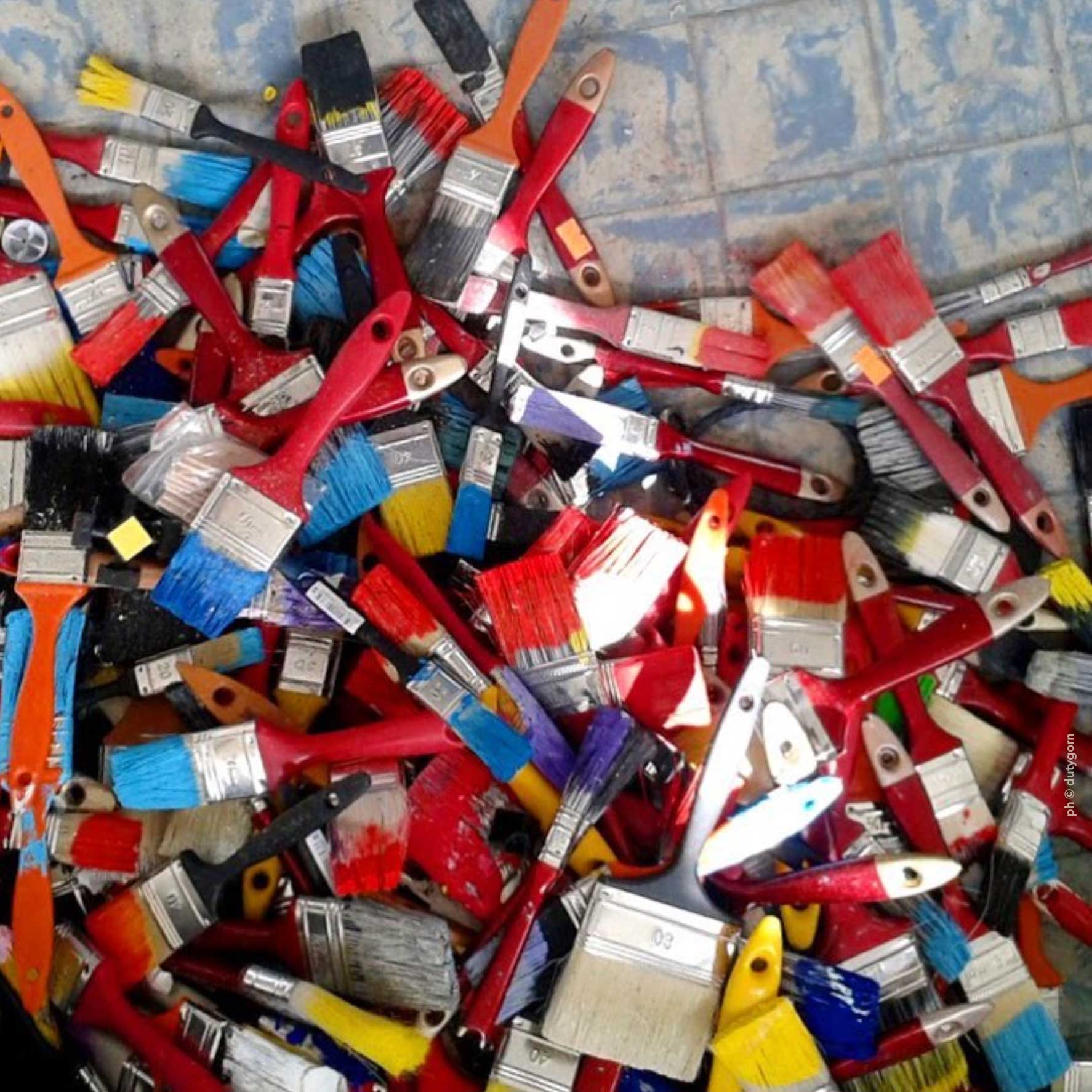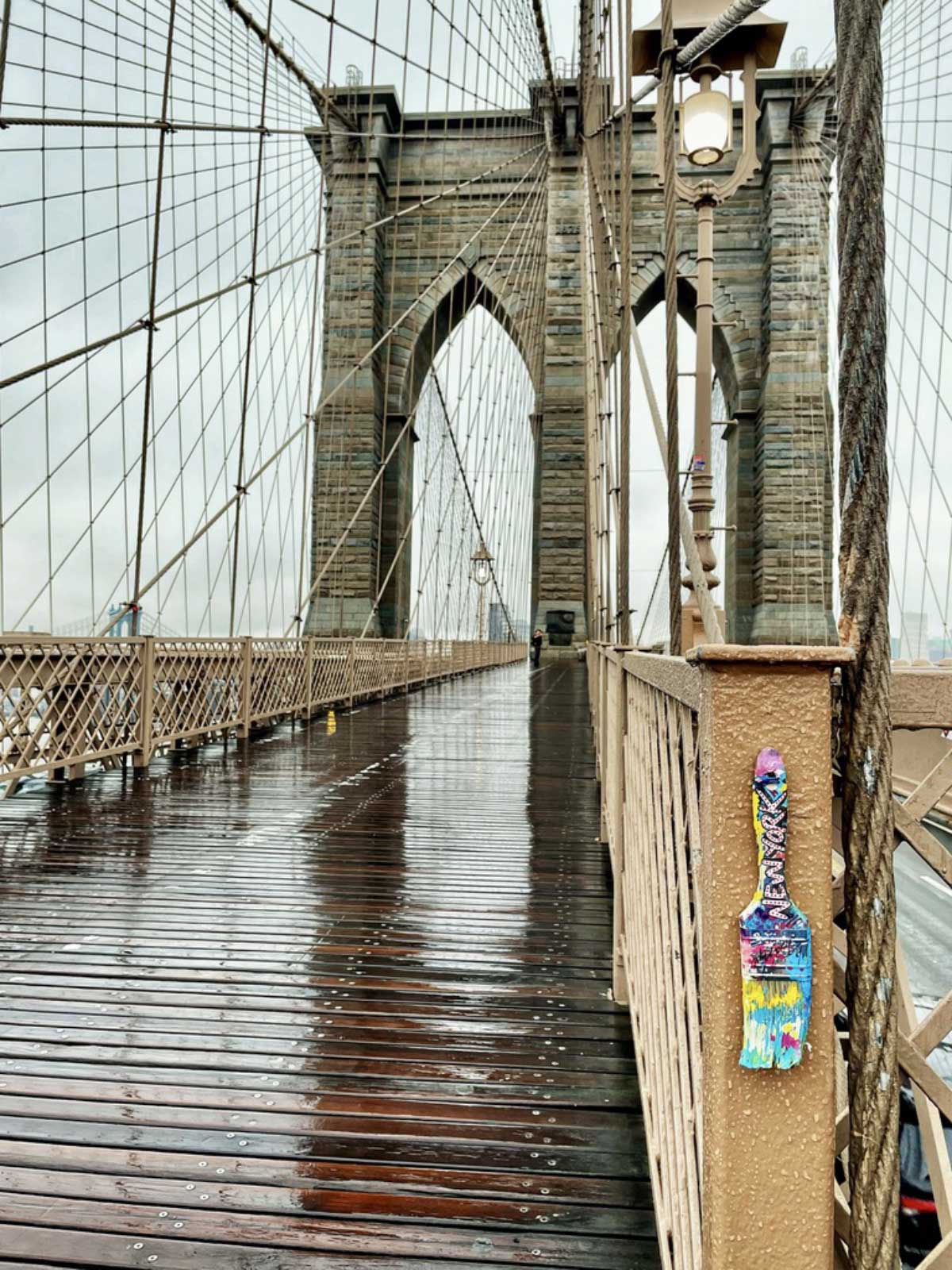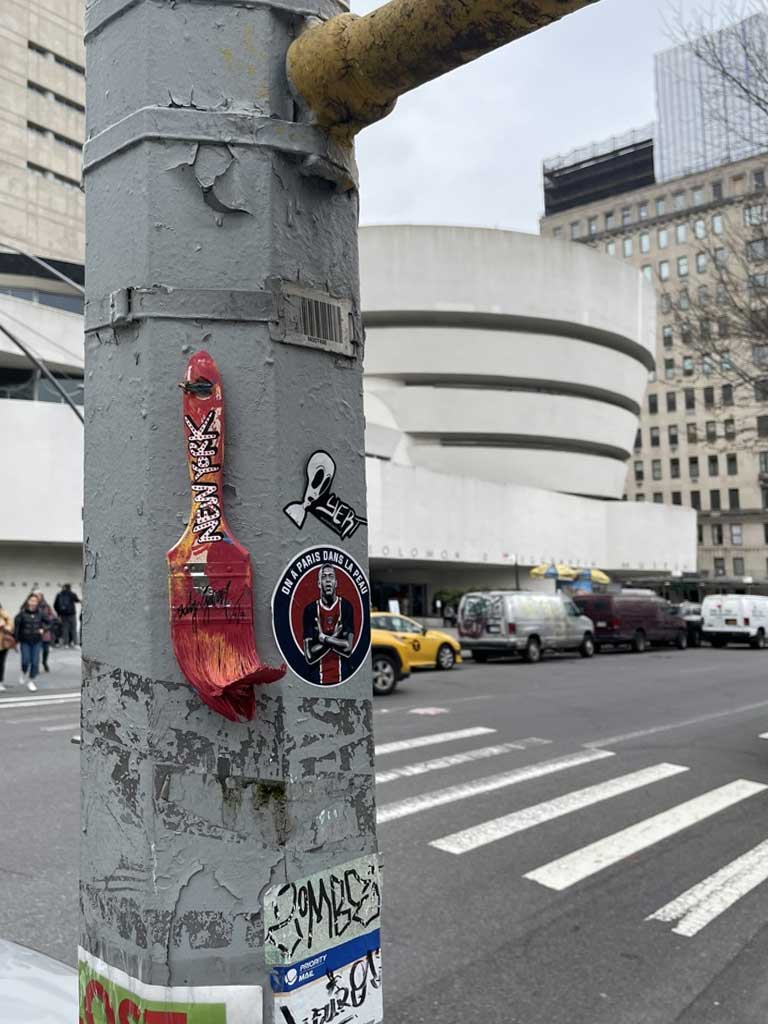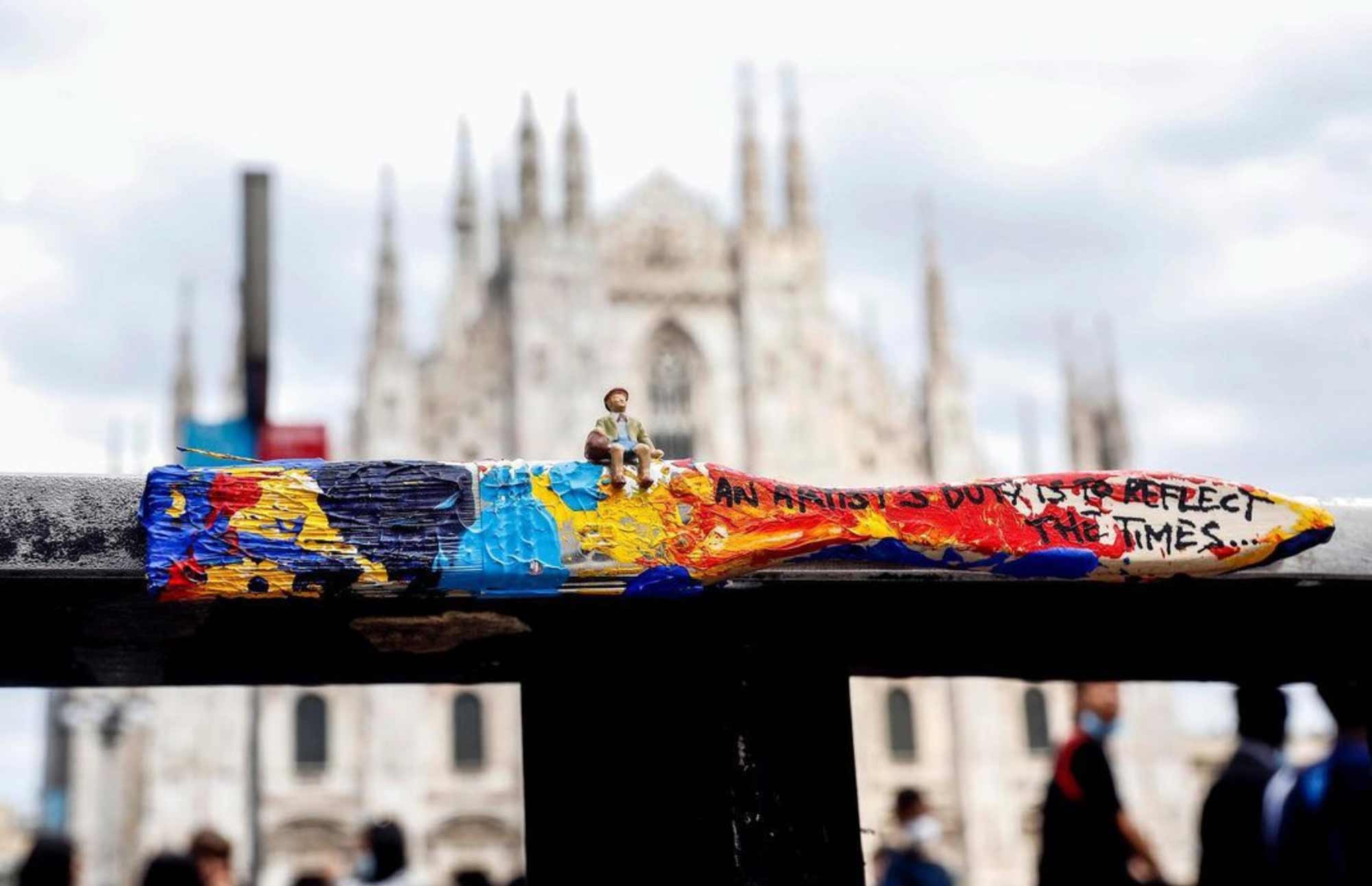Brushes are without a doubt DutyGorn’s most iconic works. They are the tools with which the action takes place; the act is performed, the idea materializes; they are the connection between the mind and what is made on the canvas. From simple objects usually shelved after their use, brushes gain new significance and meaning, becoming what can be called a real work of art where the soul of its creator also lives.
It was 2014 when DutyGorn left his brushes on the streets of London. A behavior that in a way relates back to graffiti art, where every writer is inclined to leave his or her signature as an artistic expression or contact with a city. In the case of DutyGorn, this was not a premeditated circumstance, nor were the locations. Instead of the signature, the Artist left the instrument of his work, the brush, still tinged with the color used to paint.
Since then, the Artist has continued, by will or instinct, to leave traces along his path, placing brushes in seemingly random settings even if unconsciously linked with his life and artistic journey. Indelible testimonies and signs capable of telling an experience, of expressing the soul of the Artist and his work, which now lives again in that place by means of the instrument with which it was created.
As in the series Polyplytch Indeed, two important and characteristic concepts of his Art emerge in the Brushes as well: the desire to create a timeline that unites past, present and future combined with the ability to give new life to something, with the idea that nothing dies but can be reborn in a new form, as in the cycle of life. Stage by stage, the Brushes have expanded, forming a map that has transcended overseas borders: an ever-evolving happening that interacts and makes connections with people, urban settings, and new cultures.

